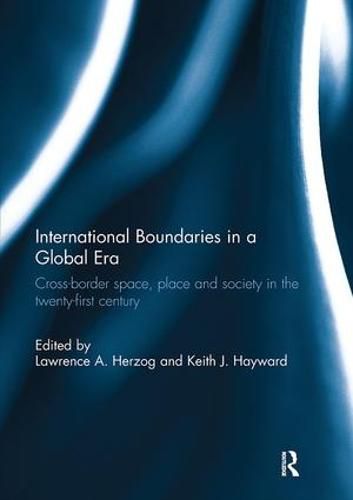Readings Newsletter
Become a Readings Member to make your shopping experience even easier.
Sign in or sign up for free!
You’re not far away from qualifying for FREE standard shipping within Australia
You’ve qualified for FREE standard shipping within Australia
The cart is loading…






As we move deeper into the twenty-first century, the forces of globalisation continue to transform both the spaces around international borders, and the social processes, cultural practices, economies, and political dynamics within and between these spaces. The geographies of border regions have undergone a dramatic transformation over the last half century; nation-state boundaries growing ever more porous in many (though not all) areas of the planet. Global trade has become an accepted norm in business transactions almost everywhere. Coupled with the revolution in digital technology, the era of globalisation promises to continue to challenge old ideas, with new approaches to understanding international boundaries and the regions they impact.
All of the chapters in this book, mainly drawn from the US-Mexico border (with comparisons to Europe), speak to the ways in which border regions have become important places in their own right, spaces where people live, work, and create art, where corporations invest, where crimes occur, and where security remains a concern. They are, therefore, spaces that need to be better understood and managed, especially in light of the cross-national and global forces impinging upon them. This book was originally published as a special issue of Global Society.
$9.00 standard shipping within Australia
FREE standard shipping within Australia for orders over $100.00
Express & International shipping calculated at checkout
As we move deeper into the twenty-first century, the forces of globalisation continue to transform both the spaces around international borders, and the social processes, cultural practices, economies, and political dynamics within and between these spaces. The geographies of border regions have undergone a dramatic transformation over the last half century; nation-state boundaries growing ever more porous in many (though not all) areas of the planet. Global trade has become an accepted norm in business transactions almost everywhere. Coupled with the revolution in digital technology, the era of globalisation promises to continue to challenge old ideas, with new approaches to understanding international boundaries and the regions they impact.
All of the chapters in this book, mainly drawn from the US-Mexico border (with comparisons to Europe), speak to the ways in which border regions have become important places in their own right, spaces where people live, work, and create art, where corporations invest, where crimes occur, and where security remains a concern. They are, therefore, spaces that need to be better understood and managed, especially in light of the cross-national and global forces impinging upon them. This book was originally published as a special issue of Global Society.